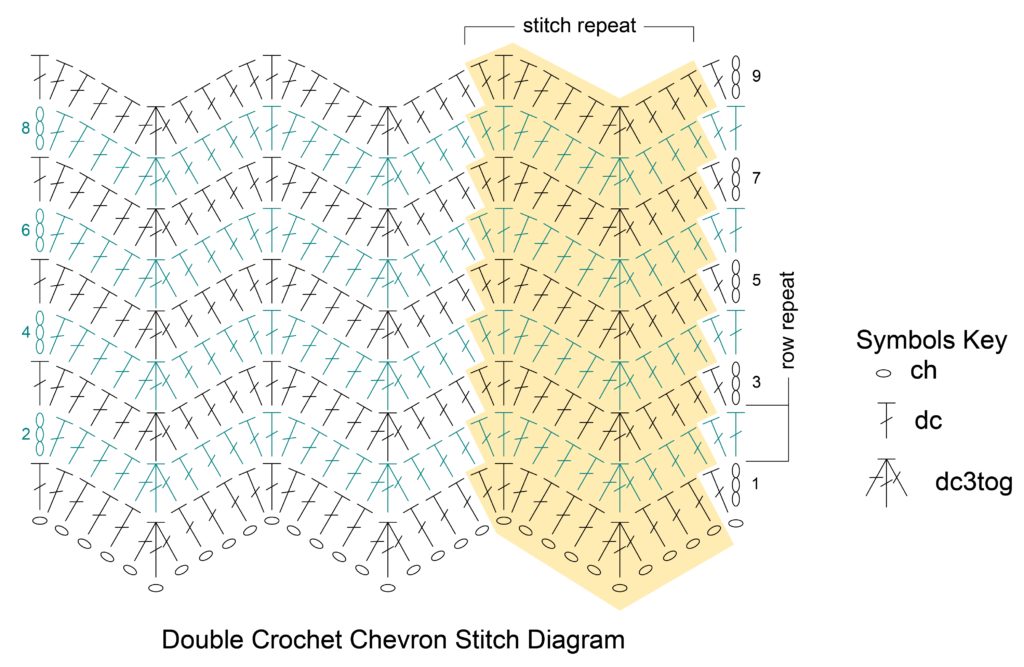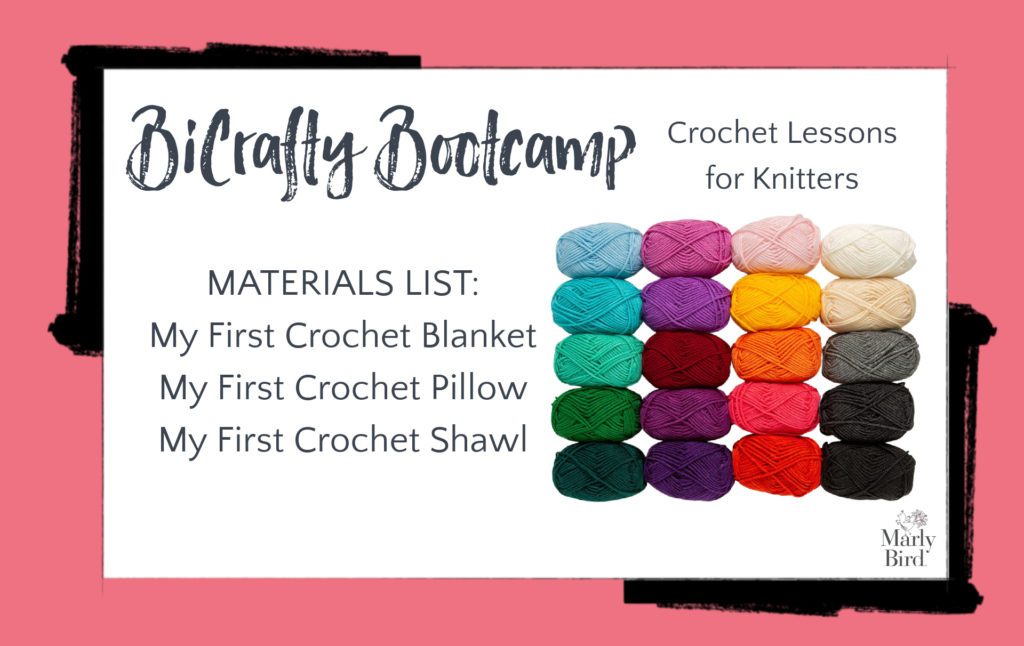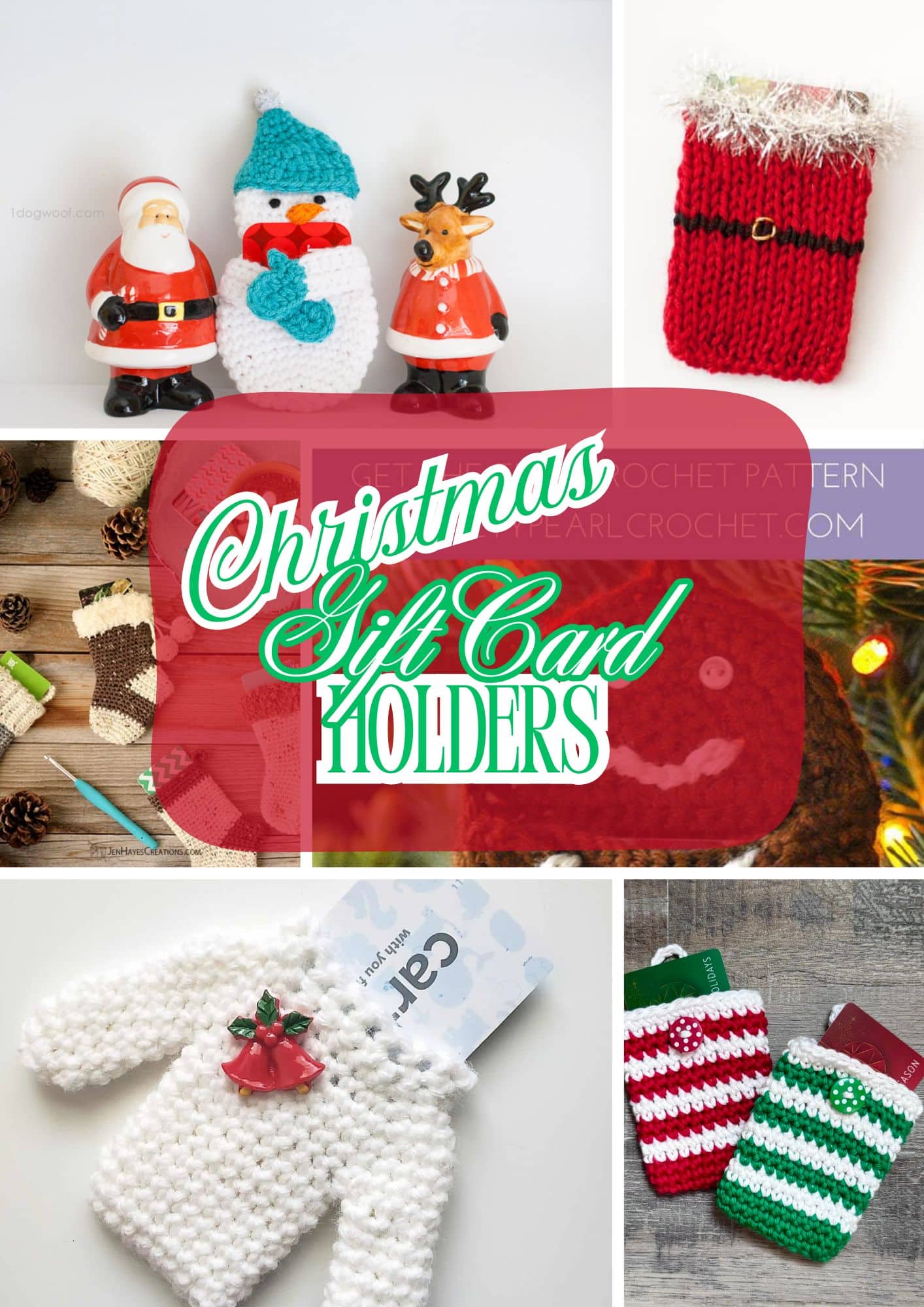How to Chevron Crochet (BiCrafty Bootcamp: Beginner Crochet Lessons for Knitters: Lesson 4)
Welcome to Week 4 of BiCrafty Bootcamp: Beginner Crochet Lessons for Knitters. You’ve already learned so much, haven’t you? This week we’re going to help you continue to use the basic crochet stitches in new ways. You’ll learn how to increase and decrease on edges and in rows. You’ll keep on building that crochet muscle memory. And you’re going to learn how to chevron crochet, making a facecloth to match the sets of items that we’ve worked on to date.
It’s Time To Buy More Yarn!
This is the last week that we’re working with WeCrochet Dishie Yarn. We’ll use it as your learn how to chevron crochet because we want your facecloth to match the rest of the self-care patterns you created in weeks 1-3. But next it’s time to move on to different yarn. This will give you the opportunity to make more things as well as to see how crochet hooks behave when working with different fibers.
Above you can see what we’re going to be making next. And THIS POST tells you exactly what you need to buy in each amount to complete lessons 5-10 of BiCrafty Bootcamp Crochet Edition.
NOTE: This week in the video we also mention the wonderful City Tweed Yarn. Get it here. You could actually use this yarn, follow the chevron crochet pattern below, make it longer and it becomes a cozy autumn scarf.
What We’ll Recap This Week As You Learn How to Chevron Crochet
If you’ve been following along with the first three lessons then please pause and pat yourself on the back. You’ve already learned how to work “cast on” in crochet, work five different basic crochet stitches, combine stitches across a row, crochet in both stitches and spaces, work multiple stitches into a single space or row, crochet granny sets and crochet shells, create the right height turning chain, change colors in crochet, read crochet charts, start getting used to reading written crochet patterns, and properly weave in / bury ends. WOW!
This week we’re mostly going to use those skills again to show you how to chevron crochet. The truly great thing about crochet is that once you’ve learned how to work those basic stitches, there are seemingly infinite combinations of them to create different textures and patterns. So you can already do a lot more in crochet than you even imagined. This chevron crochet facecloth will help you build your muscle memory and work on increasing and decreasing with the row.
What Is Chevron Crochet?
You’re probably already familiar with the chevron pattern. After all, it’s popular in everything from fashion to home decor. As a knitter, you might have knit chevron stripes. For example, my one-ball one-color beginner knit hat pattern has subtle chevron striping. The chevron is basically an inverted V shape repeated over and over across a row; think mountain peaks and valleys across the row. It’s often done with color changes to create striking striping. It’s a very bold, geometric pattern, although you can opt to make it subtler with your color choices.
When you learn how to chevron crochet, the main thing you’ll learn is those crochet increases and crochet decreases. You’ll use the same stitch across the entire row. For example, you can do hdc chevron crochet or dc chevron crochet. You’ll use increases to create the mountain peaks then you’ll use decreases to create the mountain valleys. The increases and decreases are strategically placed exactly the same amount apart for a consistent look.
How to Stacked Double Crochet (and crochet straight edges every time)
You’ll get to learn a new technique this week: stacked double crochet. You already know how to double crochet. This is just a way to begin a row with a look-alike double crochet stitch that’s got some benefits over a turning chain of 3. Learn more about the stacked double crochet in this video:
How to Standing Double Crochet to Start a Row
You’ll also see in the video that you can do a standing double crochet instead of a ch 3, which is different from a stacked double crochet. Here’s a short lesson on that: Watch a tutorial video here.
How to Increase and Decrease in Crochet to get a Chevron Stitch
The main new thing that you’re going to learn in this lesson is how to increase and decrease in crochet. So let’s talk a bit more about that.
How to Increase in Crochet
In chevron crochet, we increase up to a “peak.” After working the designated number of stitches to climb to the top of the “peak” of the chevron stitch you will work multiple stitches in one chain or stitch. These are fully completed double crochets.
When working the crochet increase, you are making 3 (or more in other patterns) chains or stitches into 1 thus increasing 2 stitches.
How to Decrease in Crochet
In chevron crochet, we decrease down to a “valley.” After working the designated number of stitches to walk to the bottom of the peak or what Marly calls the “valley” of the chevron stitch you will work 1 stitch over the multiple of chains or stitches. These are partially completed double crochets that are then completed with the final pull through of all stitches partially completed.
When working the crochet decrease, you are making 1 stitch into 3 (or more in other pattern) chains or stitches thus decreasing 2 stitches.
Is Being a Knitter Making It Easier to Learn Crochet?
Many of you here are, of course, knitters first. Although honestly you’re bicrafty now if you’re caught up on the lessons. YAY! Is being a knitter making it easier to learn crochet than if you were brand new to yarn? We think so:
- You understand how different fiber behaves differently on hooks/ needles made of different materials. This is less dramatic in crochet than in knitting, but it’s a good thing to understand.
- Although the motions are different and you’re still building up your crochet muscle memory, you do have some familiarity with the way that the tools and yarn move. You have a sense of how to hold them.
- Moreover, you grasp the concepts of tension and gauge. You know how one impacts the other. Your hands might not quite have the tension right, yet, but you’re getting there.
- You understand about different fibers. Many of you are very excited to move on from cotton to something new next week!
- Additionally, you have a sense of important concepts that apply to both crafts. For example, counting stitches and rows, changing colors (which is only slightly different in crochet), reading abbreviations and charts.
- Finally, you also know about increases and decreases. Therefore, you’ll have a general sense of what we’re doing this week as we learn how to chevron crochet.
Tip: In knitting, you’re not supposed to increase or decrease right at the edge. But in crochet it’s totally okay!

Lesson 4 Crochet Bootcamp Patterns: Materials
When possible, we have provided affiliate links for items. Using these links does not cost you anything more but it does let the company know you came there from us and we get a portion of the sale.
You’ll need:
Yarn: 1 ball of WeCrochet Dishie Yarn, any color or multiple colors if you want to do colorwork
Hook: 1 Size G (4.0mm) crochet hook (WeCrochet Hook, TooShay Crochet Hook)
Notions: Locking stitch markers from WeCrochet, Chenille and tapestry needles for weaving in ends
⭐️ Alternative yarn choice: In the video for lesson 4 Marly uses WeCrochet City Tweed DK and is working up a cowl or scarf.
- color a: Lemon Curd
- color b: Blue Blood
- color c: Habanero
- color d: Kelp
- color e: Brocade
⭐️ Hook: 1 Size I (5.5.0mm) crochet hook (WeCrochet Hook, TooShay Crochet Hook)
Chevron Crochet Facecloth Pattern

Stitch multiple = 10 + 14
Ch 34
Row 1: Dc in 4th ch from hook (skipped 3 chains count as a dc now and throughout), * dc in next 3 ch, dc3tog over next 3 ch, dc in next 3 ch**, 3 dc in next ch; repeat from * ending at ** in last ch, 2 dc in last ch, turn.
Row 2: Ch 3, dc in first dc, * dc in next 3 sts, dc3tog over next 3 sts, dc in next 3 sts**, 3 dc in next st; repeat from * ending at ** in last st, 2 dc in last st, turn.
Repeat row 2 until desired length is achieved.
Fasten off. Weave in ends.
How to Chevron Crochet Video Instruction
Here are our Lesson 4 instructions. The YouTube video plays live at 2:30 ET 9/22/21 but of course the replay is there for you to watch anytime on the Marly Bird YouTube Channel.
Additional Resources / Patterns For This Stage of BiCrafty Bootcamp
- Ultimate Guide to Chevron Crochet; this guide teaches you about working with different stitches and spacing to alter up your chevrons
- Chevron Waves Lacy Wrap Free Crochet Pattern
- Bernat Simple Chevron Baby Blanket Pattern
- Red Heart Soft Wave Chevron Throw Pattern
- Red Heart Chic Chevron Throw Pattern
- Caron Crochet Chevron Blanket Pattern
- Red Heart Throwback Granny Chevron Pattern; combine the granny stitch you learned with the chevron stripe!
- Long Double Crochet Chevron Stitch Pattern; note that the placement of the stitch is different than usual with this technique












I’m so excited that I can now do crochet! I have been a knitter for 64 years and have tried to teach myself crochet from time to time but it was such an effort to do that I quit. This has been fun and I can do it. I have an Etsy shop and doll clothes are some of my better sellers. I’d like to be able to crochet some of the cute patterns I see.